Valuation & Development
As we’ve seen over the previous three years, inventory traders don’t like recessions, not even the no-shows. There was a lot anxiousness about an imminent recession from January 3, 2022 by October 12, 2022, as mirrored by the 25.4% drop within the S&P 500 over that interval.
Over that interval, business analysts confirmed traders’ fears by decreasing their consensus expectations for the working earnings per share (EPS) of the S&P 500 firms by 0.2% and 1.9% for 2022 and 2023. These had been very modest cuts, so the ahead earnings estimate based mostly on the analysts’ annual estimates rose 5.8%.
(“Ahead” earnings is the time-weighted common of the analysts’ consensus estimates for the present 12 months and following one; the ahead P/E is the a number of based mostly on ahead earnings.)
However, recession fears induced traders to slash the ahead P/E for the S&P 500 from 21.7 at the beginning of 2022 to fifteen.3 on October 12, 2022.
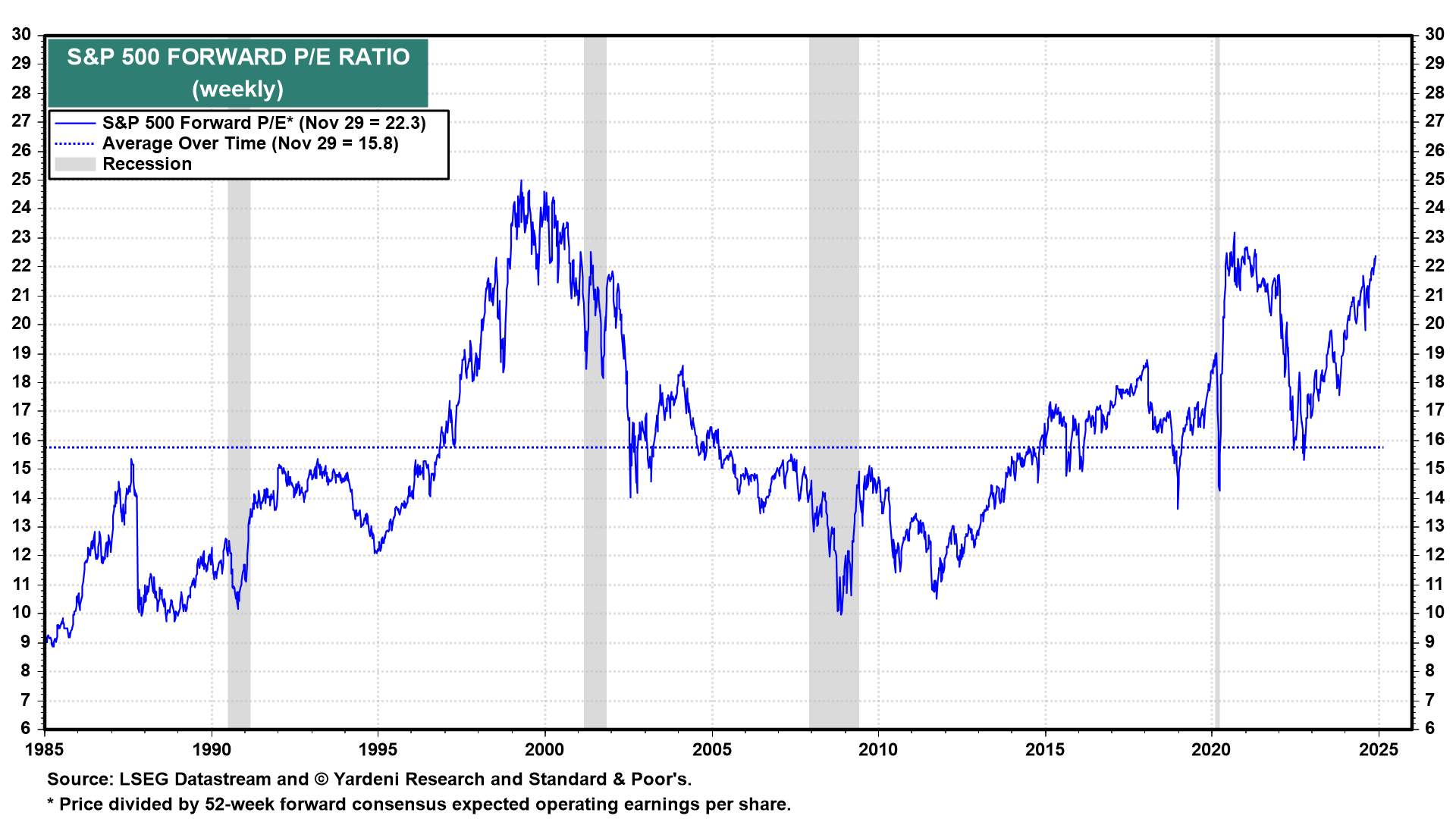
That was a 29.5% drop that was solely partially offset by the 5.8% improve in ahead earnings. The end result was a P/E-led bear market.
Bear markets are inclined to backside with ahead P/Es properly under the historic common of 15.8.
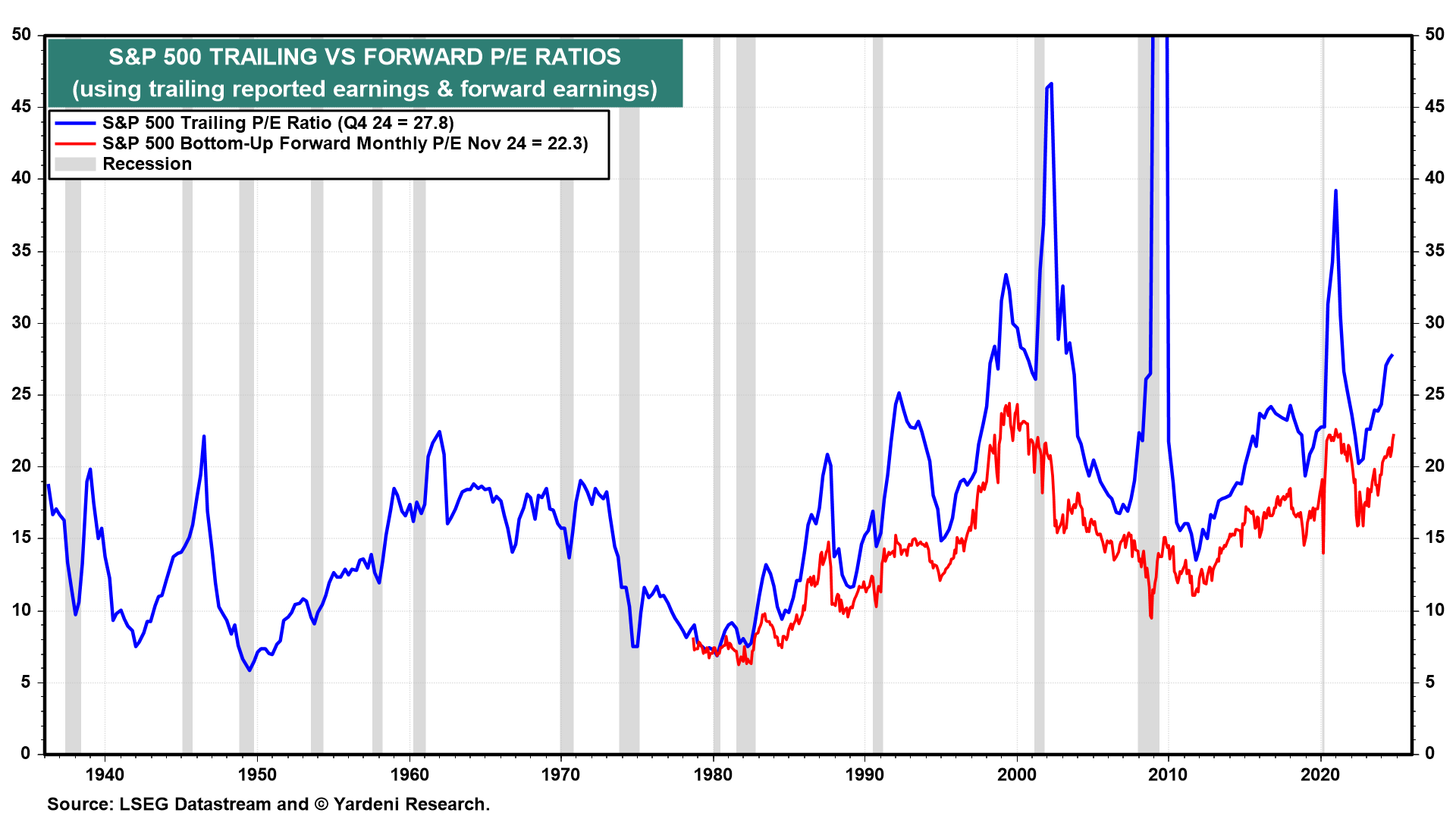
But, the most recent one bottomed at a comparatively excessive ahead P/E as a result of traders began to anticipate that recession fears may begin to abate, because the economic system proved remarkably resilient within the face of the numerous tightening of financial coverage from March 2022 by August 2023.
So from 15.3 on October 12, 2022, the ahead P/E rebounded impressively to 22.3 in the course of the ultimate week of November this 12 months. That 45.8% improve within the S&P 500’s valuation a number of was bolstered by a 15.5% improve within the ahead EPS. The end result has been a strong bull market, up to now, that has saved tempo with the earlier eight bull markets.
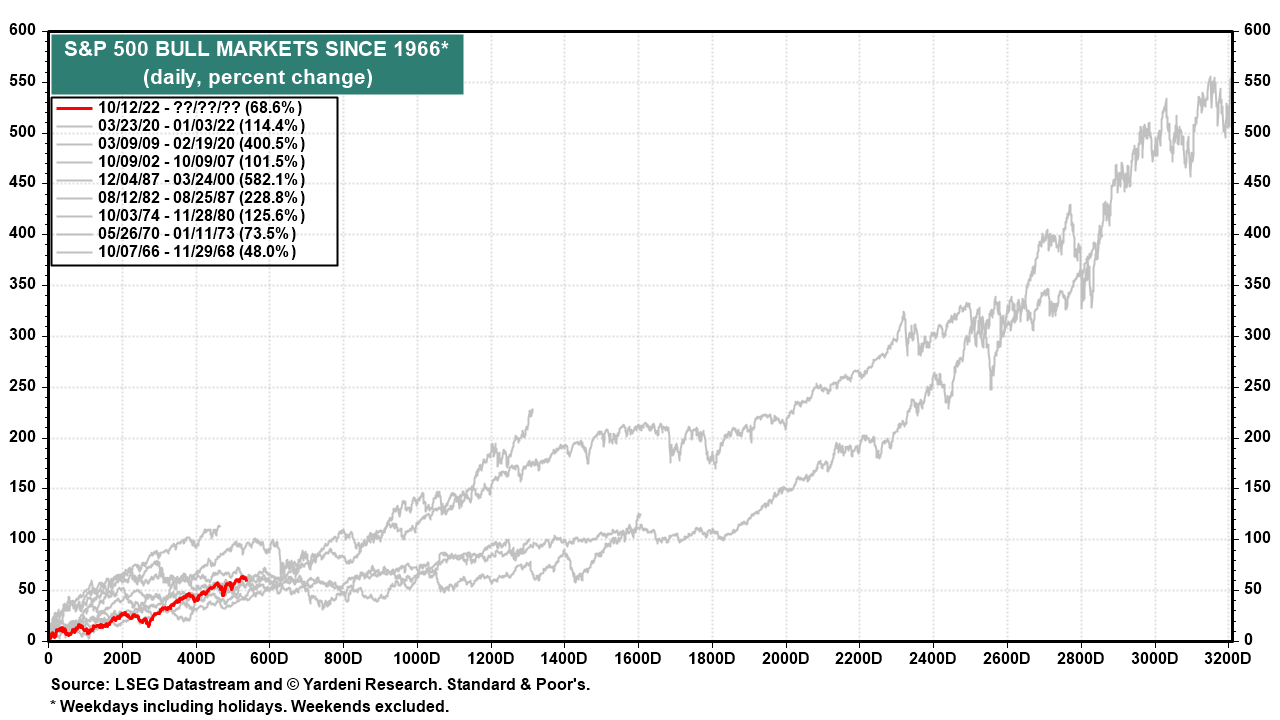
The purpose of this stroll down Reminiscence Lane is that the valuation a number of is a major determinant of the inventory market’s positive aspects and losses. By means of traders’ willingness to purchase and promote at explicit valuation ranges, they amplify and anticipate modifications within the consensus analysts’ expectations for EPS.
In our opinion, the important thing driver of the ahead P/E is traders’ notion of how a lot and for the way lengthy earnings can develop earlier than the subsequent recession depresses earnings and the valuation a number of. Financial development drives earnings development, and traders’ expectations for each drive the ahead P/E.
Buyers pays a better P/E the longer they imagine that the financial growth will final. That’s as a result of time is cash. The longer the growth, the longer that earnings need to develop to justify the present a number of.
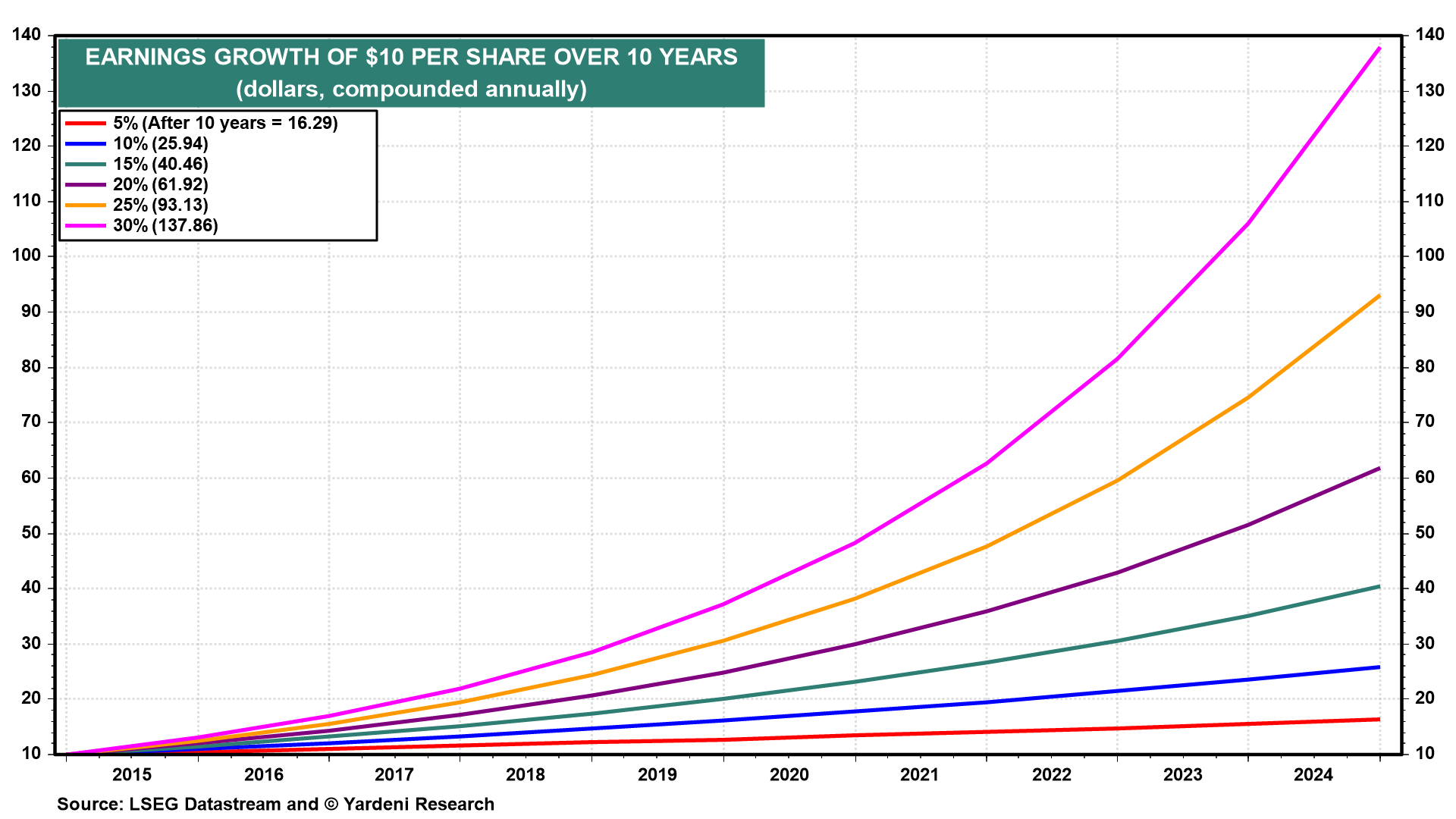
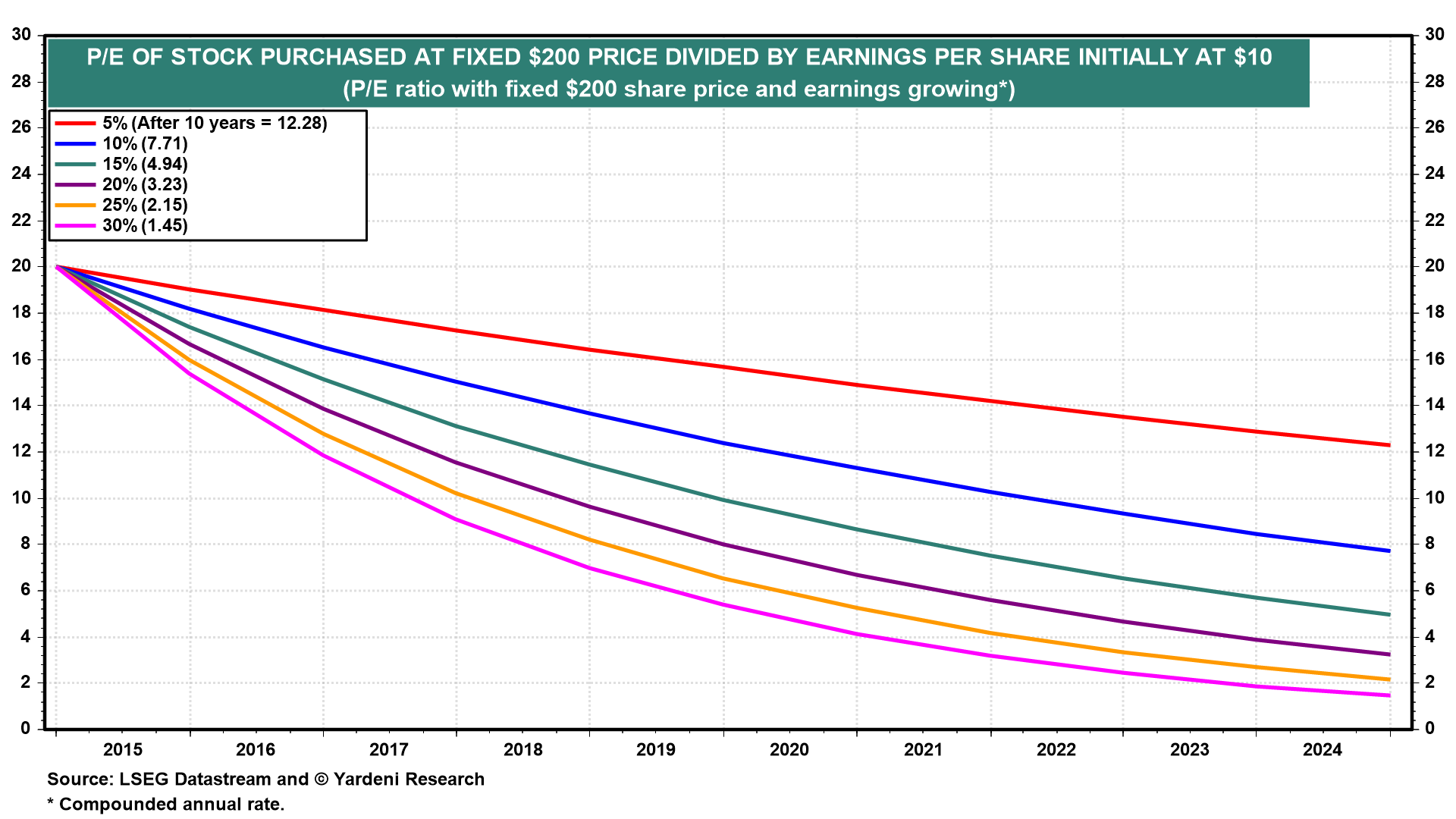
That helps to elucidate the dramatic rebound within the ahead P/E in the course of the present bull market. When fears of a recession throughout 2022 turned acknowledged as unfounded over the previous three years, the speedy rise within the valuation a number of mirrored traders’ growing confidence that the economic system and earnings would proceed to develop regardless of the tightening of financial coverage.
So now what? The Fed has been chopping the federal funds price since September 18. That actually reduces the chance of a recession attributable to the tightening of credit score situations and will increase the percentages of a protracted growth.
If the tightening of financial coverage is not a threat to financial development, what else could be? Maybe a geopolitical disaster that causes oil costs to soar, as occurred a few instances in the course of the Seventies? Thus far, the geopolitical crises since 2022 haven’t boosted the value of oil, which has been largely falling since then.
That leaves a tariff conflict as a possible explanation for a recession now that President Donald Trump is again and able to slap tariffs on all of America’s buying and selling companions. Thus far, inventory traders aren’t fazed by Tariff Man, whom they imagine is talking loudly and carrying a giant stick as a negotiating tactic. We agree.
Stretched Valuations
So now that we have now defined why at present’s excessive valuations could be justified, we should acknowledge that they’re stretched by historic requirements. We wouldn’t wish to see them go any larger as a result of that might drive us to lift the percentages of a Nineties meltup state of affairs from our present subjective chance of 25%.
Let’s overview the most recent readings on numerous valuation metrics:
(1) Trailing P/E. The four-quarter trailing P/E of the S&P 500, utilizing reported earnings, rose to 27.1 throughout Q3-2024, properly exceeding the 19.6 common because the late Thirties.
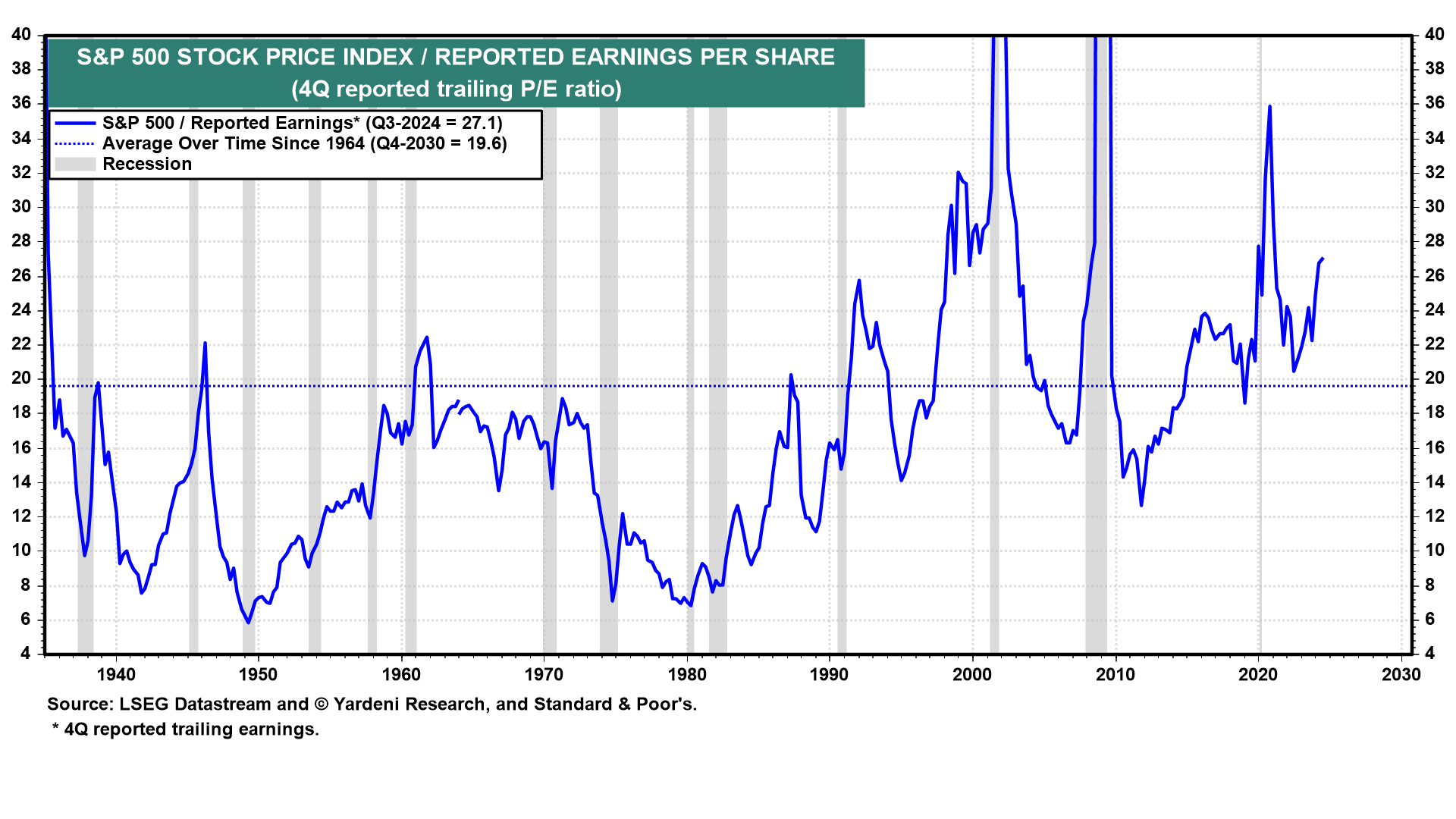
It bottomed at 20.5 throughout Q3-2022, above its historic common. It’s not a helpful valuation measure, although, because it tends to soar throughout recessions as earnings fall sooner than inventory costs.
(2) Buffett Ratio. A few years in the past, Warren Buffett talked about that he likes to observe the ratio of the full worth of US company equities at market worth divided by nominal GDP. The Buffett Ratio rose to a record-high 2.96 throughout Q2-2024.
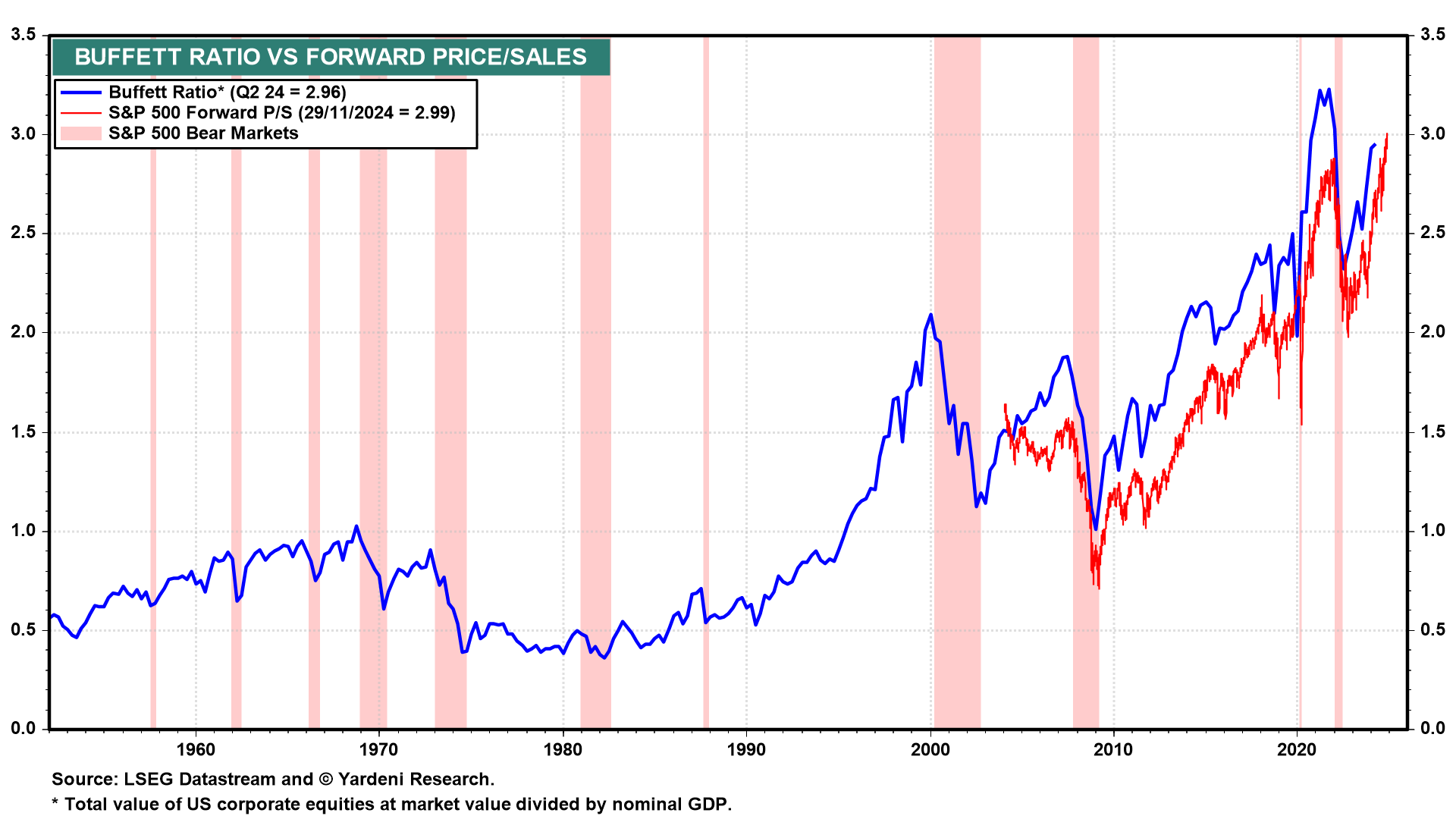
A helpful weekly proxy ratio is the value of the divided by the ahead revenues per share of the index (i.e., ahead P/S).
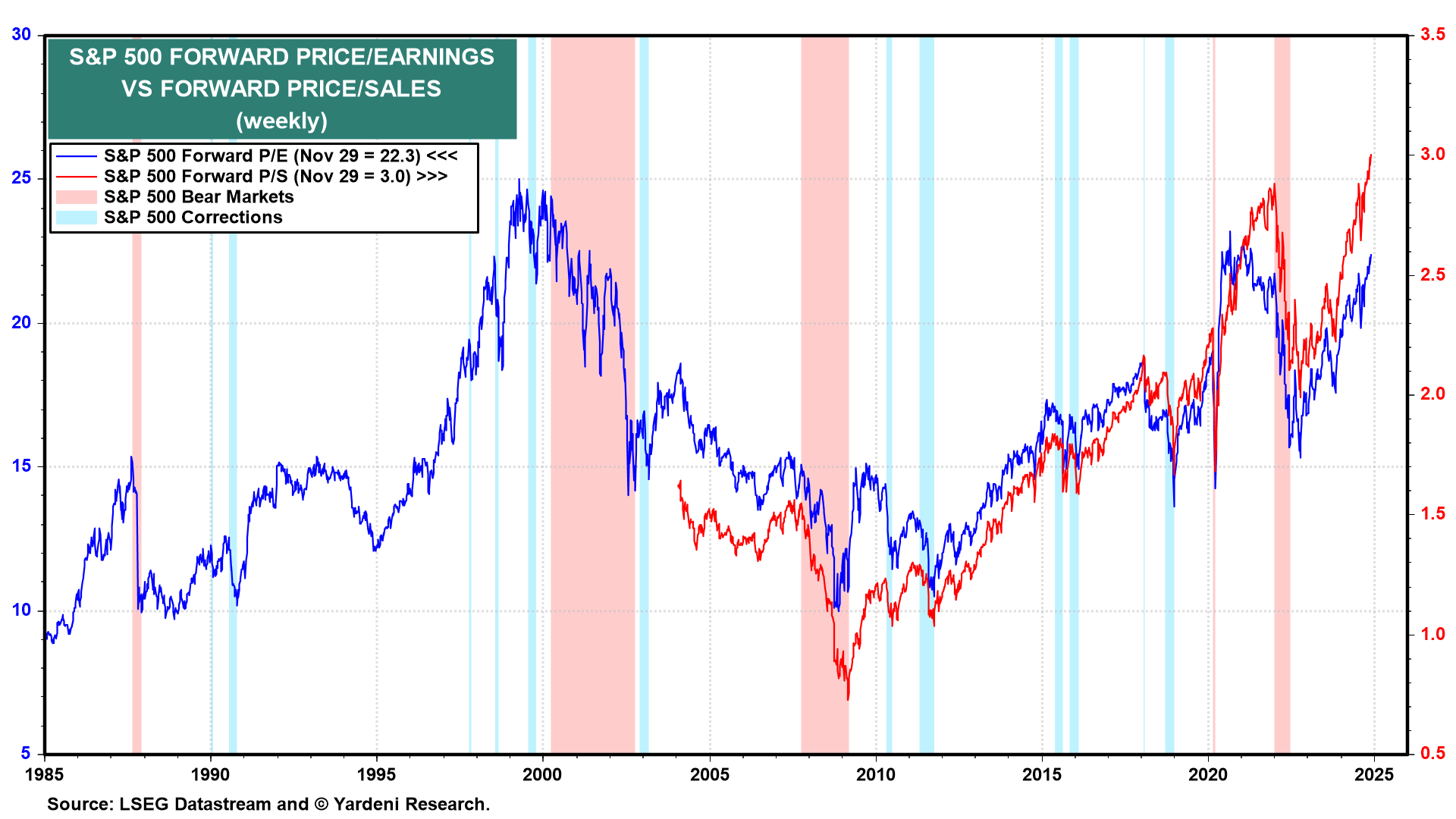
It rose to a file 2.99 in the course of the ultimate week of November. Beforehand, Buffett famous that readings above 2.0 counsel that the market is getting overvalued. Which may clarify why he has been elevating a lot money within the portfolio he manages for Berkshire Hathaway (NYSE:).
(3) Ahead P/E. The ahead P/E of the S&P 500 rose to 22.3 on the finish of November.
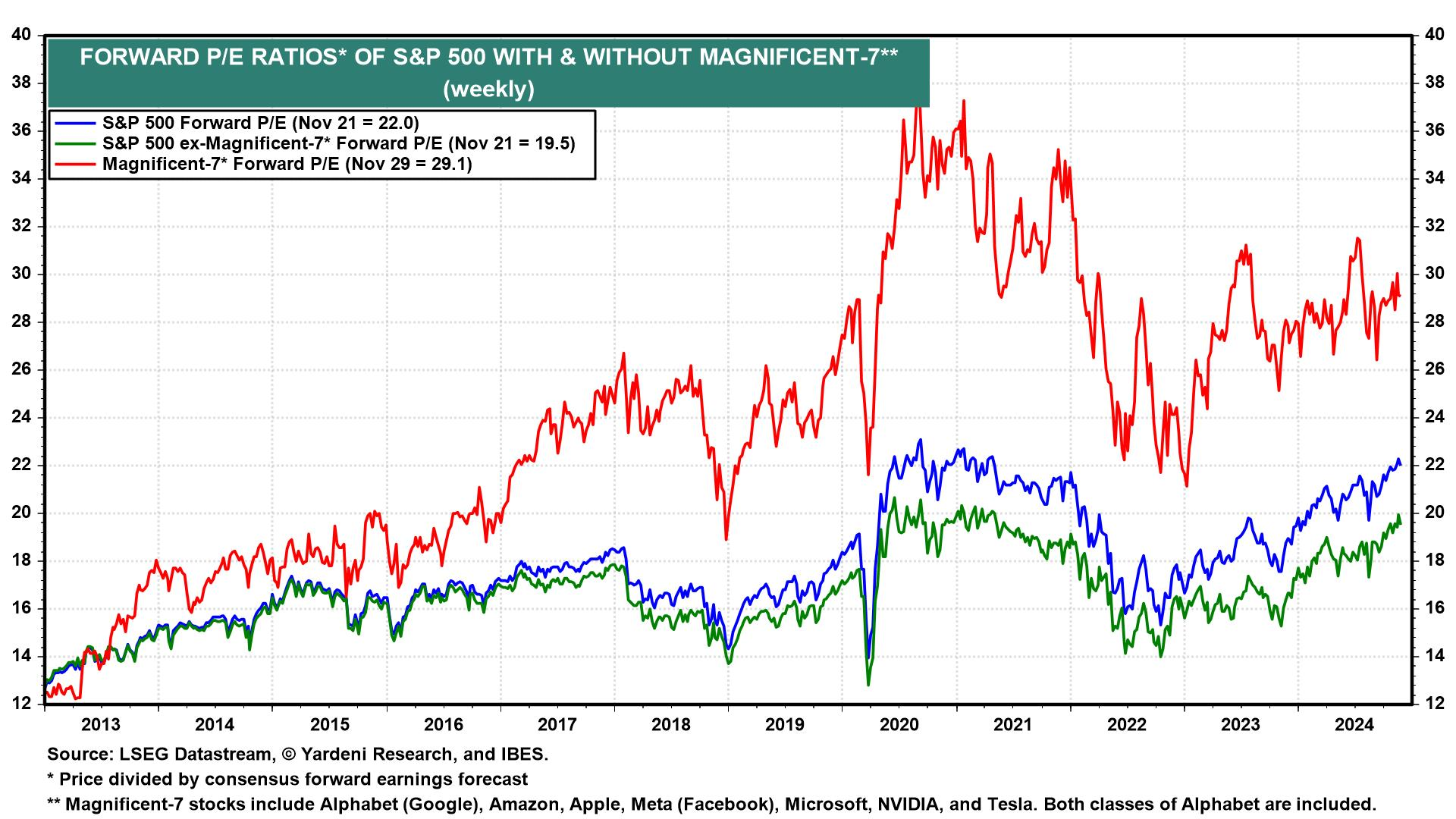
That’s not at a file excessive, in contrast to the ahead P/S ratio, as a result of the S&P 500’s ahead revenue margin has been rising, boosting the expansion of earnings relative to gross sales. However, it’s closing in on the file excessive of 25.0 recorded in the course of the Tech Bubble of 1999.
The S&P 500’s ahead P/E has been boosted by the collective ahead P/E of the Magnificent-7, presently 29.1, whereas the ahead P/E of the remaining S&P 493 firms is at 19.5. Equally, the median ahead P/E of the S&P 500 was 19.8 throughout November.
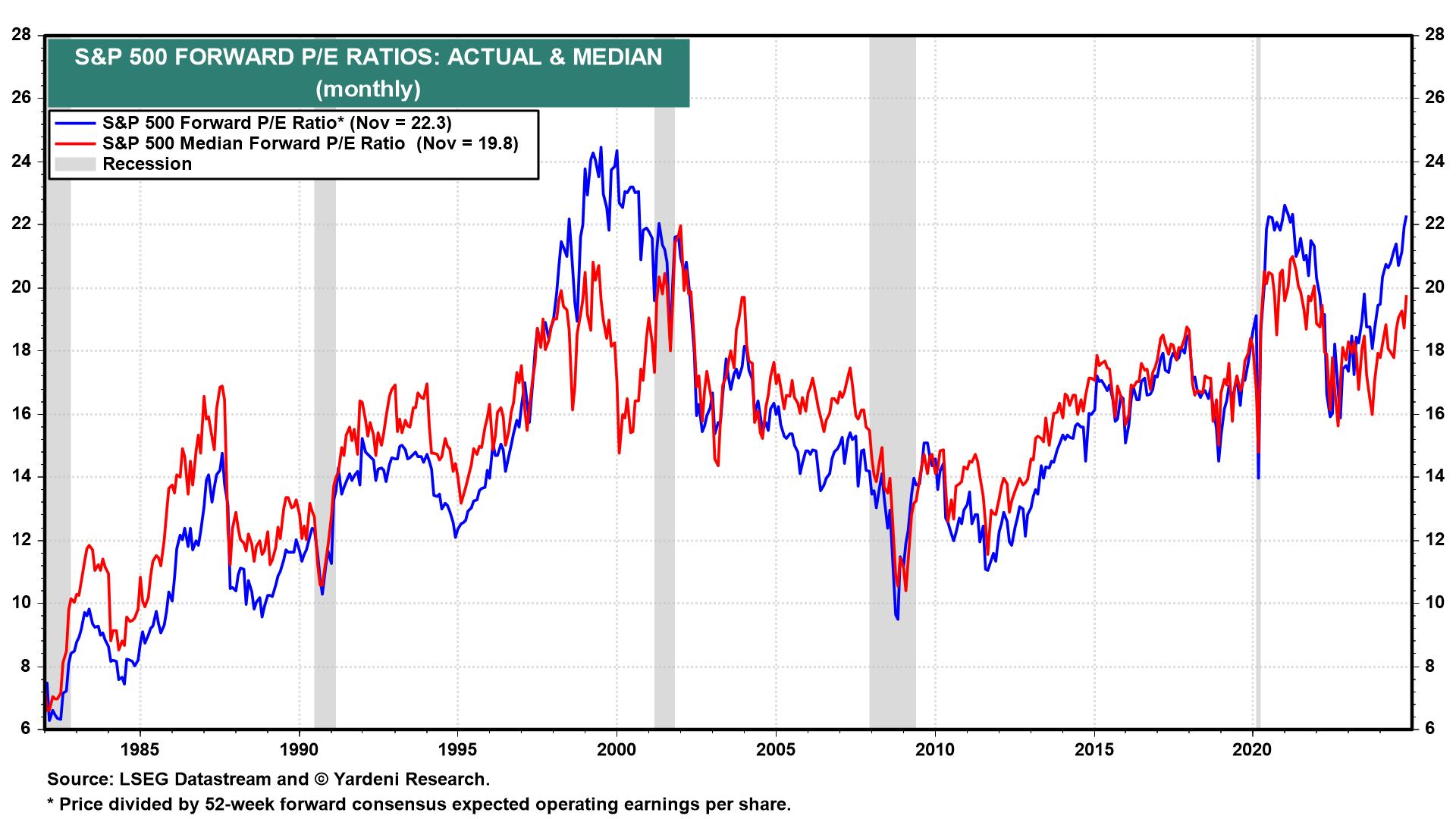
(4) Fed Mannequin. The Fed’s Inventory Valuation Mannequin compares the ahead earnings yield of the S&P 500 to the Treasury bond yield. The 2 had been extremely correlated from the mid-Eighties by the late Nineties.
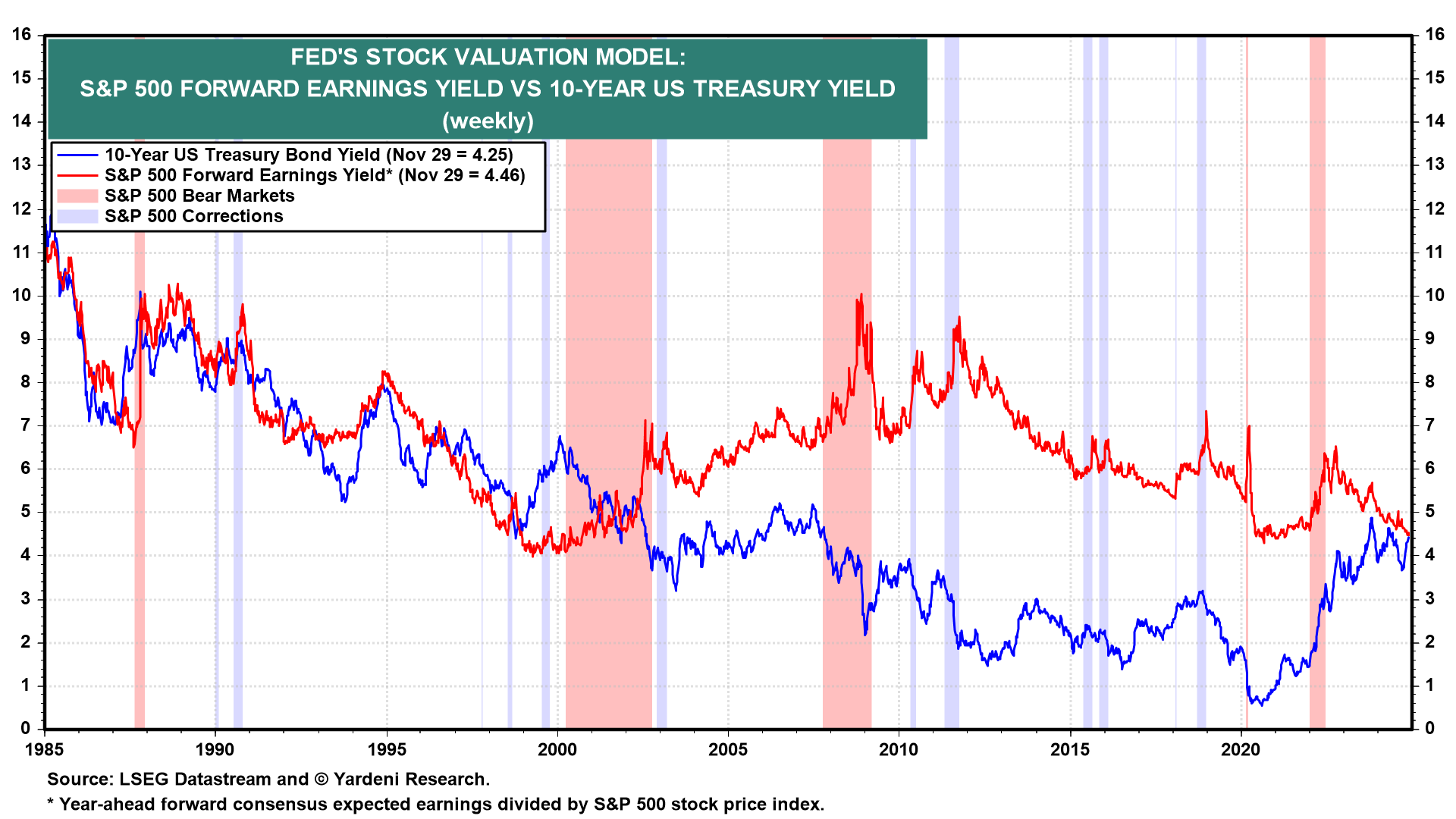
They’ve diverged significantly since then. The mannequin could also be price monitoring once more now that the ahead earnings yield at 4.46% is nearly similar to the 10-year Treasury bond yield.
(5) Actual earnings yield. The unfold between the S&P 500 earnings yield based mostly on reported earnings and the Shopper Value Index inflation price tends to be adverse throughout recessions and bear markets.
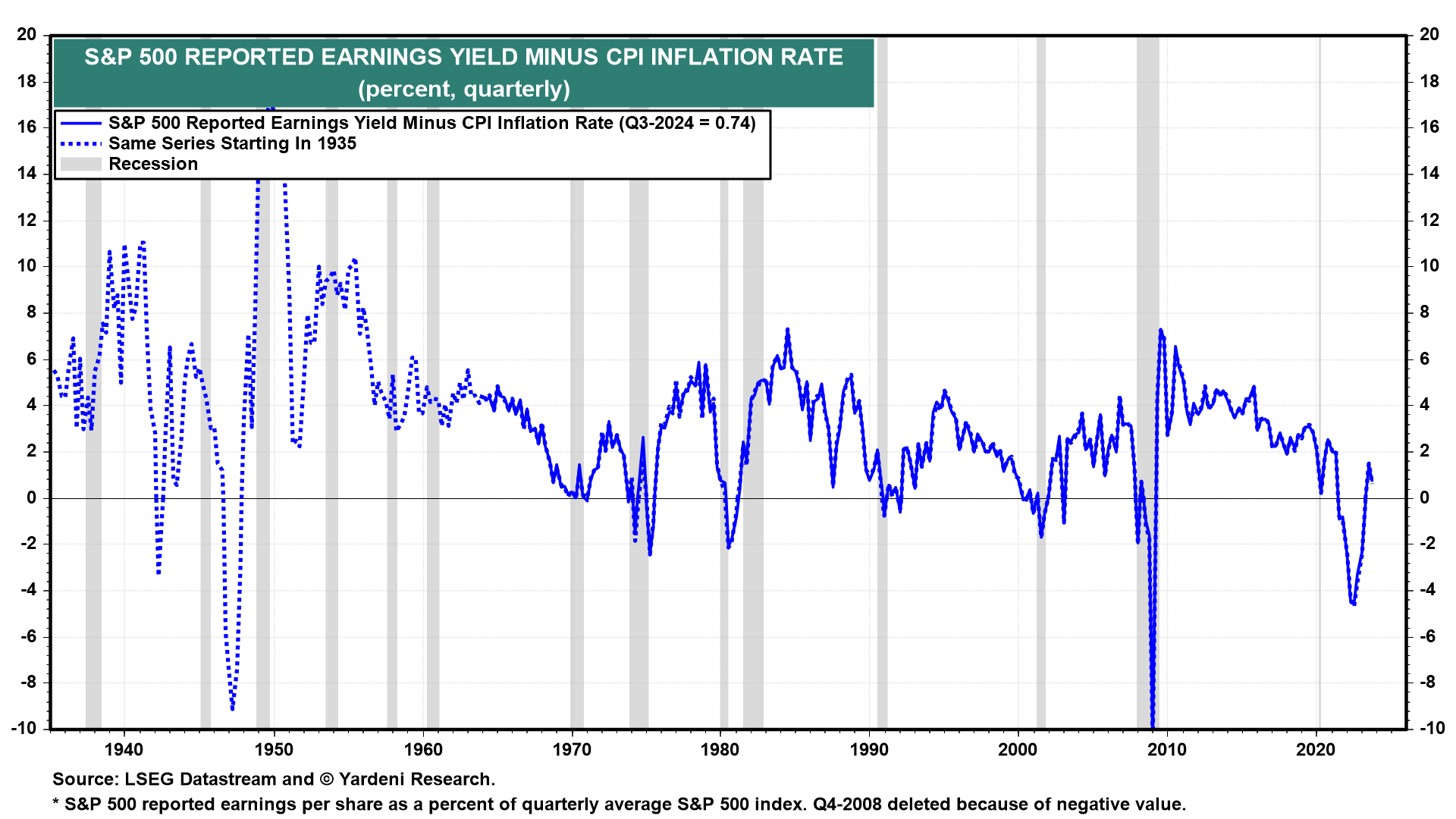
It has been barely constructive for the previous six quarters.









